One of the most common dilemmas among ladybug enthusiasts who are taking on the task of caring for these fascinating insects is how to hydrate them and what exactly do they drink?
As a general rule, ladybugs drink the fluid from soft-bodied insects like aphids. Ladybugs will also drink nectar and honeydew providing them with energy and hydration. As an alternative, ladybugs can drink water directly from a water source, these include dew and small puddles on leaves.
To understand the importance of hydration to ladybugs, keep reading!
Why do ladybugs need fluids?
Lady beetles are highly mobile insects, and the frequent movement tends to make them susceptible to dehydration, especially if they have been moving around during the hot season.
Moisture is one of the things that attracts and keeps ladybugs in one location. During the hot months, fluids keep the beetles hydrated. Also, water and other fluids help with the standard body processes, including respiration and digestion.
During the earlier stages of ladybug development after hatching from eggs, they need plenty of water to survive and grow.
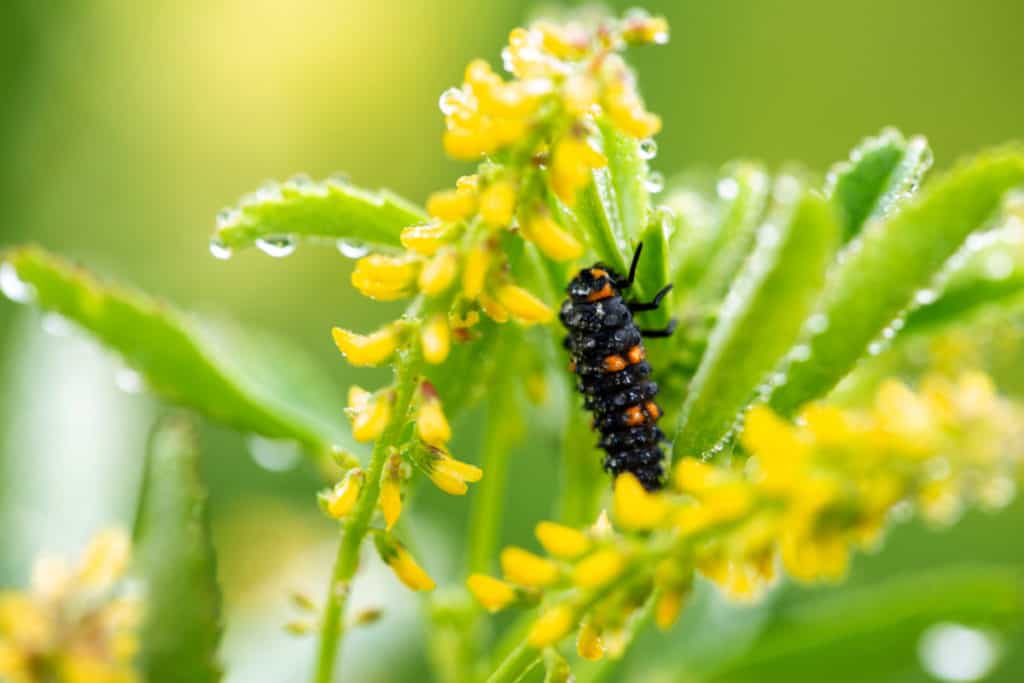
Therefore, if you want to introduce ladybugs into your garden (they are super beneficial for gardeners as they feed on pests such as aphids), keep your garden shaded and sprinkle water in the evenings to keep their environment conducive for growth.
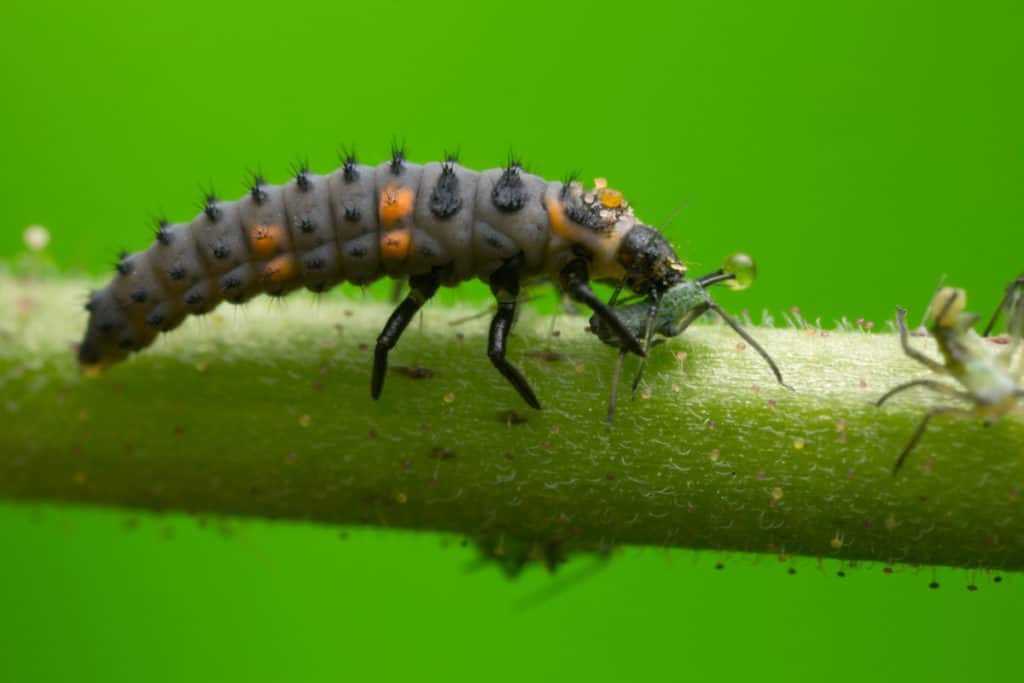
As the ladybird beetles grow, they can continue to sustain their hydration needs from what they feed on.
Ever wondered how long ladybugs can actually live? Ponder no longer, we have written an article that answers this in detail. Check it out if you are interested, How Long Do Ladybugs Live?
How Do Ladybugs Drink?
The anatomy of a ladybug enables it to drink water using its mouthparts. The mouth area of a ladybug includes mandibles and palps. These two structures flex inwards, a process that draws droplets of water inside the mouth of the ladybug.
The beetle can also immerse its entire mouth, also known as the labium, into the water. This does not affect its breathing because ladybugs do not breathe using their mouths.
Ladybugs use their antennae to detect where the water is by smell. But this typically applies to ladybugs in the garden or their natural habitat. If you keep them at home as pets, you may have to give them water via wet cotton balls. You can also use small sponges immersed in water or soaked paper towels.
Remember to be gentle when setting down any of the above because it is very easy to squash a ladybug owing to its size.
How much water does a ladybug need?
A ladybug needs just as little as two to three drops a day of water or fluid for sustenance.
Although they are not overly thirsty, ladybugs cannot do without that tiny amount of water. It takes just two days without water for a ladybug to begin weakening and eventually dying.
During winter ladybugs do not hibernate but, instead diapause, meaning they slow down their development, keeping their food low.
However, they still need nourishment. And while they pack on the weight for the winter, they need water as well to survive. If the water levels in their bodies are depleting rapidly, it is not surprising to see ladybugs emerge during winter for a drink.
If you are a ladybug pet owner, make sure that you keep them in a conducive environment where they have plenty of water and food.
Sources of hydration for ladybugs
Ladybugs do not go to the traditional watering holes for a drink. They are very innovative little insects that know how to get as much hydration as they need without exposing themselves as prey. Here is where they get their hydration from:
Honeydew
Honeydew is a sweet and sticky secretion that comes from aphids. Now, considering that the ladybugs’ favorite meal is aphids, then it is correct to assume that their hydration needs are satisfied just by consuming aphids.
Aphids are excellent sources of honeydew because they are full of the sap they suck out of the plants they eat. That makes them not only tasty but succulent as well.
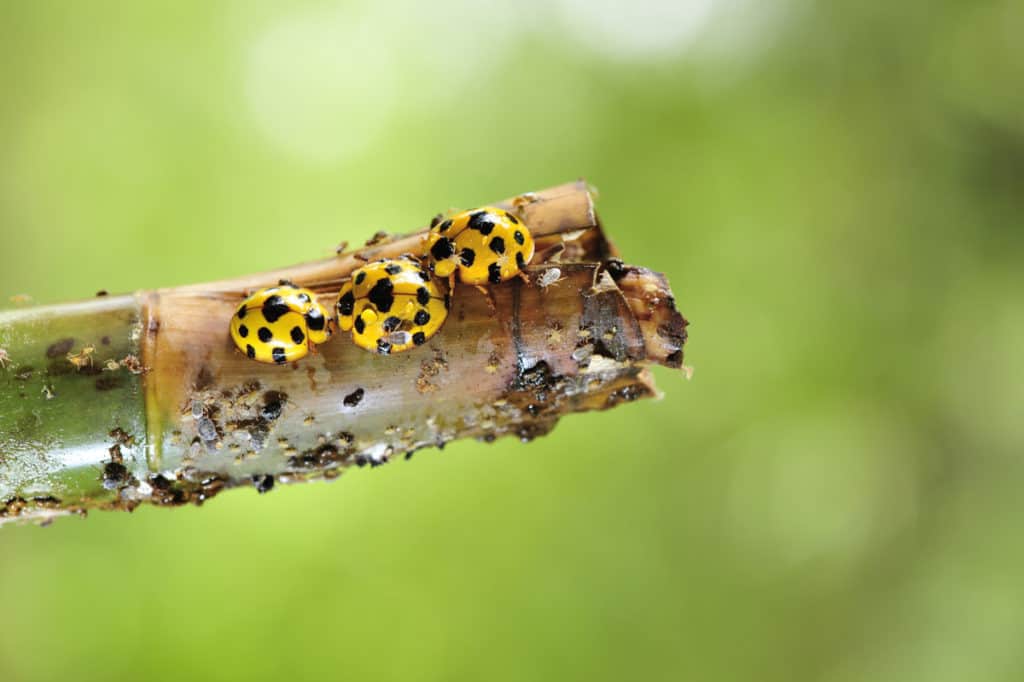
These insects pierce the phloem of the plant using their needle-like mouthpart. The fresh sap enters the aphid’s canal while forcing out the older sap in their system.
Aphids need to take in a lot of sap to sustain themselves so even what they excrete is still similar in the constitution because the honeydew stays in their systems for a very short time. However, the insects’ bodies absorb the proteins before they excrete the older honeydew.
The sap from the plants is all sugar and water with a small portion of protein, which explains the need to ingest a lot of the sap to meet their protein needs. Once the sap runs through the aphids’ bodies, it is converted to honeydew, which is hydrating to ladybugs.
Nectar
Nectar is easily associated with bees, but ladybugs also love the stuff. It is the juice of the plant usually produced by glands known as nectarines or nectaries.
These glands naturally occur within the plant’s flower, and they attract pollinating insects like bees and yes, ladybugs too.
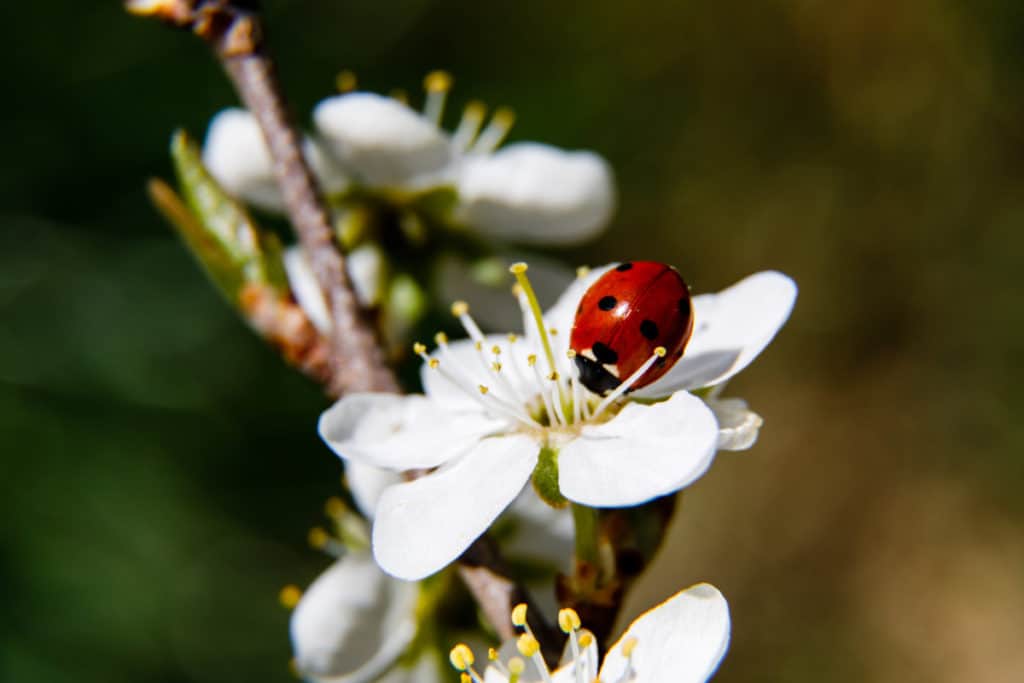
Nectar is sugar-rich, viscous and it contains vitamins and minerals that keep the ladybug healthy and sound. The oils and protein in the nectar are crucial in helping the ladybug to add weight. The weight gain is in preparation for the harsh winter when they have to hibernate.
So not only is nectar a source of hydration it also makes excellent food for the ladybug. It’s worth noting that ladybugs only eat nectar in the absence of aphids.
Water
Water is a primary source of hydration especially when the beetle’s typical sources are not available. During the warm months of late summer, aphid populations may begin to dwindle as these insects do not thrive in hot temperatures. That means that the ladybug is consuming fewer aphids, and the flowers are also not blooming as much as they do in spring.
With dwindling sources of honeydew and nectar, ladybugs will turn to water to stay hydrated. This water is most likely what sustains them during this period and helps them survive to the next spring.
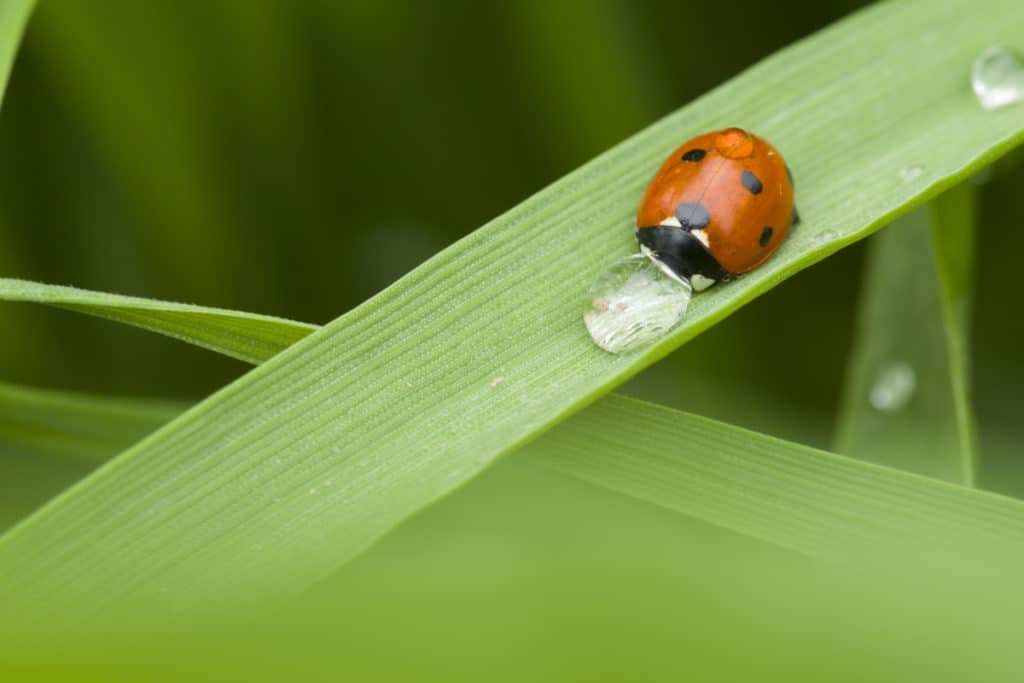
Sugar water
A smart trick to attract ladybugs to your garden is spraying sugar water. This mimics the nectar and honeydew that these adorable beetles are attracted to.
The sugar water not only attracts ladybugs but also provides hydration for the larvae of the beetles that need a lot of fluids to grow healthy.
What about fruit? Do ladybugs use fruit as a source of food and hydration? Can you feed ladybugs fruit? These are all good questions. So we have written a whole article on this topic. We found you have to be careful with fruit and feeding ladybugs. Check out the article if you are interested, Do Ladybugs Eat Fruit?
Tips on hydrating ladybugs
Do not put any open water sources
As ladybugs need as little as 2 to 3 drops of water, it is almost impossible to drown these tiny insects. But some people prefer to leave their ladybugs water in small bottle caps. This is dangerous and can lead to the drowning of your ladybug. Even a small pool of water can drown a ladybug.
It is safer to use soaked paper towels and cotton balls to provide hydration for your pet ladybug.
Also, a cap of water is an excellent breeding ground for bacteria when left too long.
Always remove excess water
Once you have dipped the paper towel, cotton ball, or sponge into the water, make sure that you remove the excess water. What is left is more than sufficient to sustain the ladybug.
But you must keep an eye on the cotton balls, sponges, and paper towels. Monitor them to make sure they are moist and touch them to ensure they are not dry or stinky. If they are dry, spritz them again. If they stink, get rid of them altogether.
Consider misting for hydration
It is safer to mist the habitat walls of your ladybug pet daily rather than to put in a wet cotton ball or paper towel. That offers a thin layer of moisture from which your ladybug can drink from. And it is more than enough.
The Wrap Up
Sometimes you may notice condensation on the sides of a container placed outdoors or against your window. You may also see a ladybug right there amid the condensation. The little lady beetle is actually drinking its fill of water for the day. So if you can place a closed container in the ladybug’s habitat, that would be a helpful way of ensuring it gets to drink safely.
But most importantly, create a conducive habitat for these little guys by providing shaded and excellent flora so they can keep hydrated.
Sources
https://www.honeybeesuite.com/what-is-honeydew-honey/
https://schoolofbugs.com/how-long-does-a-ladybug-live-without-food/
